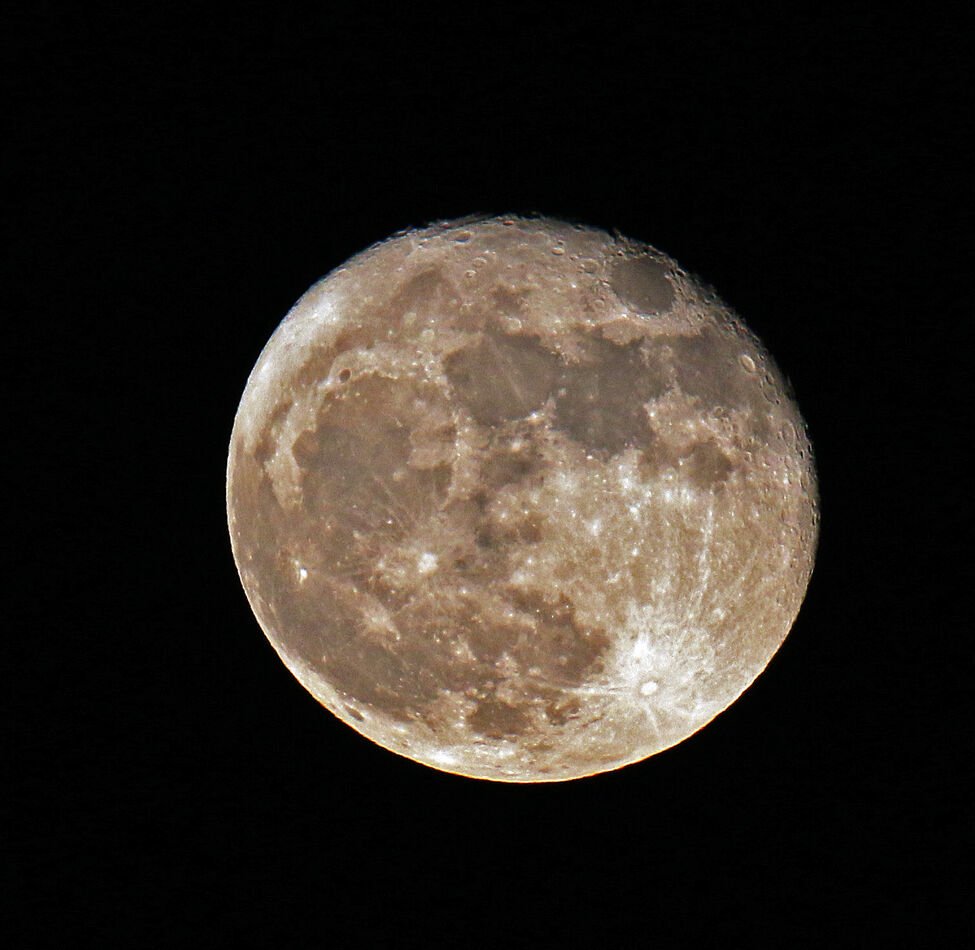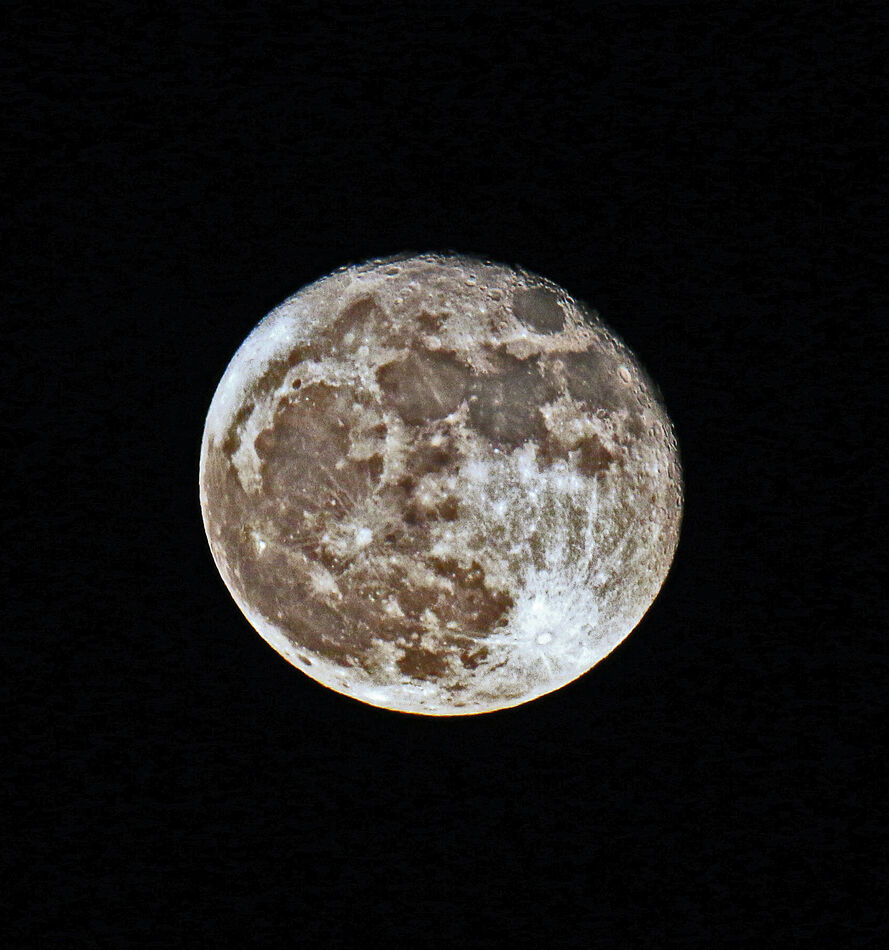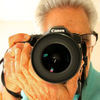How to capture the moon
May 31, 2023 22:59:21 #
Stardust wrote:
A really, really large net and a really, really long rope?
Sorry, the devil made me write that.
Sorry, the devil made me write that.




May 31, 2023 23:57:10 #
With no equipment at all you can get around this by putting your camera on manual and l looking at the images it shows you as you change your exposure
Jun 1, 2023 01:49:13 #
rehess wrote:
I don’t understand why this so important to some people. NASA does a great job - from above the atmosphere.
They have more practice and a bigger budget.
Jun 1, 2023 06:26:59 #
Rhare wrote:
I can never capture the moon as it looks. Any suggestions?
Besides the suggestions to 'go manual', a must, I have found that the moon at twilight presents different crater details than when shot at night. Below is an example (handheld):
https://www.uglyhedgehog.com/t-747137-1.html
These are not SooC shots. I adjusted contrast, used Photoshop Haze removal (nondefault setting which is too aggressive) and cleaned up noise with Topaz.
The full moon should be avoided - too much glare.
Jun 1, 2023 08:13:56 #
Sidwalkastronomy
Loc: New Jersey Shore
Where you get the most contrast is at the terminator, which is the light and dark border, that is the sunrise/sunset if you were on moon.
With a telescope you get a lot more detail and contrast at that junction, more 3D effect.
I do all phases and the full moon.
I would never trust the back of the camera view and bracket a lot
With a telescope you get a lot more detail and contrast at that junction, more 3D effect.
I do all phases and the full moon.
I would never trust the back of the camera view and bracket a lot
Jun 1, 2023 08:40:26 #
Jun 1, 2023 09:51:31 #
Jun 1, 2023 11:40:03 #
You'll need a tripod and a long lens. 400 mm or longer and a shutter release cable. If you don't have one, use the self timer. ISO: 200 - 400. Don't use a low f stop as it will blow out the moon. f11 -f16. Remember the earth rotates, so you have to use a faster shutter speed. Anywhere between 1/125 - 1/250. Do not take a reading off the moon. Use manual exposure and experiment a bit with it.
Jun 1, 2023 13:12:24 #
Sidwalkastronomy
Loc: New Jersey Shore
willaim wrote:
You'll need a tripod and a long lens. 400 mm or longer and a shutter release cable. If you don't have one, use the self timer. ISO: 200 - 400. Don't use a low f stop as it will blow out the moon. f11 -f16. Remember the earth rotates, so you have to use a faster shutter speed. Anywhere between 1/125 - 1/250. Do not take a reading off the moon. Use manual exposure and experiment a bit with it.
You are neglecting the third keg if exposure triangle by saying don't use liw for stop.
I meter off the moon. But I include light and dark areas. And cards can hold hundreds of images shoot at all different combos. I would also never use a wired for for remote as wires move and can shake camera
Jun 1, 2023 13:21:42 #
brianajo
Loc: Youngstown, Oh
Rhare wrote:
I can never capture the moon as it looks. Any suggestions?
I also tripod most of the
but nbr 1 is iso down to about 100
speed is 1/400 or so depending on what i see in viewer to adjust for light
hope that makes sense!
Jun 1, 2023 14:34:06 #
Another useful trick to get more contrast from the surface is to photograph 1-3 days before or after the full moon. Rather than being "high noon" the sun angel becomes more and more oblique to the surface thereby producing more shadows from the irregular surface.
Jun 1, 2023 15:47:41 #
Sidwalkastronomy
Loc: New Jersey Shore
willaim wrote:
You'll need a tripod and a long lens. 400 mm or longer and a shutter release cable. If you don't have one, use the self timer. ISO: 200 - 400. Don't use a low f stop as it will blow out the moon. f11 -f16. Remember the earth rotates, so you have to use a faster shutter speed. Anywhere between 1/125 - 1/250. Do not take a reading off the moon. Use manual exposure and experiment a bit with it.
Sorry I didn't pick up my obvious typos copied below.
You are neglecting the third keg if exposure triangle by saying don't use liw for stop.
Should read 3rd leg of exposure triangle you said don't use
low f stop. Why not if you compensate with the other 2 legs of exposure triangle.
I easily take 50+ shots of the moon when I get set up.
Jun 1, 2023 15:57:53 #
Sidwalkastronomy
Loc: New Jersey Shore
stangage wrote:
Another useful trick to get more contrast from the surface is to photograph 1-3 days before or after the full moon. Rather than being "high noon" the sun angel becomes more and more oblique to the surface thereby producing more shadows from the irregular surface.
Then it's not going to be round like a full moon. My telescope club has public star parties and we aim for the day or 2 around first 1/4.the contrast around the terminator is outstanding
Jun 1, 2023 17:55:25 #
Bruce T
Loc: Michigan
Maybe because as a photographer, we train to get the images that we want and practice to improve the image.
Jun 1, 2023 22:39:30 #
Rhare wrote:
I can never capture the moon as it looks. Any suggestions?
I used my Canon 70 D using manual focus settings: 400mm, f9, 1/125, iso 250, pattern focus, trypod, remote shutter release. Cropped photo using adobe photoshop elements. I have used other settings but check my exposure meter in camera for all settings.


If you want to reply, then register here. Registration is free and your account is created instantly, so you can post right away.





